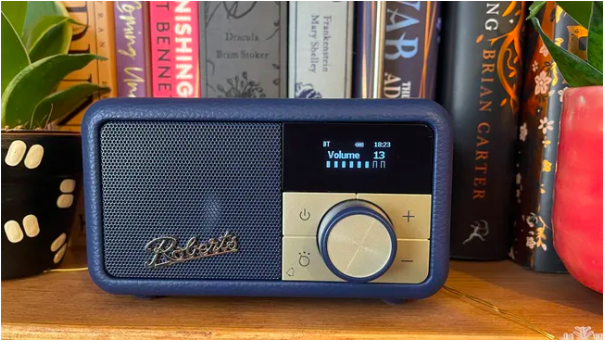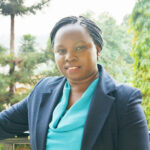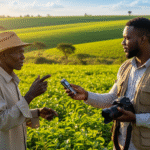
Radio: A Love Affair That Still Holds On
Ugandans love radio. Not the late musician Mowzey Radio, though his name was inspired by it but the medium itself. For decades, the radio has been a constant in people’s lives: a companion, an educator, and an entertainer. It was, and still is for many, more than just a device. It is part of the Ugandan experience. To date, there are still people yet to get their first radio.
From the 1970s, having a radio in the household symbolised status and connection to the wider world. Often reserved for the head of the family, it was a prized possession. For many young men, buying their own radio was a rite of passage, a mark of manhood. Entire relationships began through shared listening sessions, and love blossomed through music played over the airwaves.
Back then, radio presenters were unseen but authoritative. What they said was gospel. They translated world affairs into the language of the ordinary person, accessible, local, and relevant. Schoolgirls turned exercise books into lyric journals, copying song lyrics word for word as they played. That’s how music was learned and internalized.
From Colonial Mouthpiece to Cultural Backbone
Established in 1954 by the British colonial government, Radio Uganda was originally a tool for advancing colonial propaganda. According to Tony Mushoborozi, in a Monitor article, radio was created to counter anti-colonial sentiments being spread by local-language newspapers, particularly in Luganda.
Radio Uganda became the government’s post-independence primary communication channel. Every regime (military or civilian) used it to announce power transitions and extend influence. When the NRM government came to power in 1986, the announcement of cabinet ministers was made via radio. Missing the 8:00 PM news bulletin was unthinkable.
That dynamic changed in 1993 with the birth of FM radio. Stations like Sanyu FM and Capital FM introduced music-driven programming and youth-oriented content. They spoke directly to young urban listeners in English, bringing in a new energy and turning presenters into local celebrities.
Then in 1996, CBS FM, the first major Luganda-language FM station, was launched by the Buganda Kingdom, tapping into a broader, culturally grounded audience across Central and Eastern Uganda. Today, Uganda is home to 311 radio stations broadcasting in numerous languages and formats.
Is Social Media a Real Threat?
With smartphones in nearly every hand and social media usage rising, it’s fair to question whether traditional radio still holds weight. But insiders believe it does.
Collins Bareija, also known as Emeka The Romantic Mukiga, hosts the K Drive on 93.3 KFM. He sees the radio’s strength in its authenticity. “Radio thrives because of its credibility. The information is researched and verified. On social media, anyone can post anything; many are self-imposed experts with no substance. But radio has trained professionals,” he says.
According to the DataReportal 2024 Report, while 62.2% of Ugandan social media users are male and 37.8% are female, the vast majority (72.9%) of the population still lives in rural areas where radio remains the most accessible and reliable source of information.
Consolate Namyalo, the host of the Am to Pm show on 91.3 Capital FM, reinforces this, “Many rural listeners don’t have access to stable electricity or data. But a small radio powered by regular batteries can keep them informed easily. It’s still the quickest fix for staying connected.”
The Growing Pains of Radio
Still, the industry is changing. Smartphones have redefined media consumption habits. Social media now drives trends, and a station without a digital presence risks becoming irrelevant. Many radio stations have turned to livestreaming and social media engagement to maintain visibility.
In a recent interview with CMIS Africa, Dr Innocent Nahabwe, CEO of Galaxy FM and Chairman of the National Broadcasters Association, acknowledges the shift.“With tuner radios becoming rare, stations must now stream online. The cost of running a radio station by UCC, the regulator, is still high, yet the revenues from radio have gone down over the years.”
Today’s presenters must do more than just speak. They must show up visually and interact with audiences across platforms. Livestreaming has become the norm.
Livestreaming: A New Lifeline
A clear example of this trend is the partnership between Spark TV and Ddembe FM, both under Nation Media Group. Their breakfast show, Twezimbe, was simultaneously broadcast via livestream to capture more eyes and ears. The approach worked, and others have followed suit.
To Dr Nahabwe livestream is a new lifeline for radio. “Livestreaming is an opportunity. It allows stations to expand their reach and engage more interactively.”
Smartphones may no longer come with built-in radio apps, but people still want audio content. Now, they access it via social platforms; WhatsApp, Facebook, YouTube and expect to engage directly with presenters.
The Rise of Podcasts
In addition to livestreaming, podcasts have emerged as a formidable new frontier. With minimal barriers to entry and fewer content restrictions, podcasts offer hosts more creative freedom and, in some cases, more financial reward.
Ruth Kalibbala, a former host on Twezimbe on Ddembe FM, shared in an interview on Kasuku Live that she left traditional radio to run her own podcast. “I realised I could earn more independently than through a salaried radio job,” she said.
Podcasting bypasses regulations, broadcast schedules, and even studio costs. All one needs is an audience.
The Future of Radio
Despite the disruption, radio is far from obsolete. That is why February 13 is World Radio Day, established by the United Nations. For those in the industry, adaptation is key. “Everyone is going digital,” Consolate notes. “Most radios are embracing online platforms, podcasts, and even AI. That’s how we stay relevant.”
However, the place of radio in people’s hearts still remains. Dr Nahabwe clarifies, “Radio is the business of time. We help people spend their time whether driving, working, or relaxing. That’s why our presenters become like friends. There’s an intimacy radio creates that few other media can replicate.”
Radio Still Holds On
From its colonial beginnings to its current hybrid digital evolution, radio in Uganda has proven resilient. The tools may change from transistors to streams, dials to downloads but the essence remains the same: a voice in your ear, keeping you company, making you feel connected. Emeka insists, “If we stay up-to-date with trends, radio will continue to thrive.”
As Uganda’s media ecosystem continues to shift, one thing is clear: the love affair with radio is not over; it’s only entering a new phase.
![]()







